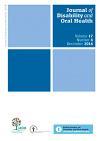Community Dental Health

- Cover Date:
- September 2012
- Print ISSN:
- 0265 539X
- Vol:
- 29
- Issue:
- 3
Professional careers of graduates from one UK dental school
Aim: The aim of this study was to consider reported working patterns of dentists and retention of the dental workforce. Method: Three cohorts of dental graduates from the University of Birmingham (n=505) were tracked using the General Dental Council (GDC) register to assess retention of the workforce. A questionnaire was sent to these graduates to explore changes in working patterns over time and to investigate the factors which had influenced their choice of job location. Results: A high proportion (90.9%) of the dental graduates included in this tracking exercise were found on the GDC register on the census date. A slightly higher proportion of female graduates (10.3%) than male graduates (8.0%) could not be traced on the current register (p=0.37). A change in working patterns over time was demonstrated, with more general dental practitioners reporting a shorter working week. ‘Availability of jobs’ was the factor reported by most respondents to be important in determining job location. Conclusion: This study provides evidence of changing work patterns over time. Furthermore, although the majority of the study sample remained on the GDC register, there appeared to have been a gradual loss of subjects from the dental workforce over time. Changes such as these may affect the provision of services and the impact of investment in training. Further research in this area is warranted.
Key words: dental manpower, distribution, career mobility, geographic location, employment status, United Kingdom
- Article Price
- £15.00
- Institution Article Price
- £
- Page Start
- 252
- Page End
- 256
- Authors
- M.A.H. Tomson, D.A. White, A.J.Morris
Articles from this issue
- Title
- Pg. Start
- Pg. End
- Editorial - Population based health and care: what does the new dental professional need to know?
- 194
- 194
- Dental Public Health in Action - The use of dental therapists as examiners in dental epidemiological surveys
- 195
- 197
- A service evaluation of patient pathways and care experiences of dentally anxious adult patients
- 198
- 202
- Assessment and validation of the oral impact on daily performance (OIDP) instrument among adults in Karnataka, South India
- 203
- 208
- High levels of periodontal disease among the older adult population in San Juan, Puerto Rico
- 224
- 228
